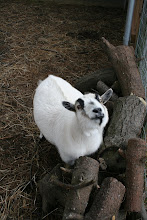¡Buenas! I just returned from Managua. All of the students in our group met there today for a workshop on grant writing, which looks like pretty tidious work. But the venue was interesting, our class was held in a small private room at La casa de los Mejia Godoy, a full time restaurant and local music venue.
The Mejia Godoy is a famous nicaraguan family of musicians (http://www.mejiagodoy.org/). Their reputation began with two brothers, Carlos and Luis Enrique, who made a career of performing traditional nicarguan music, in addition to writing and performing countless songs of political protest during the Somoza regime...and people have told me they lived and acted on what they sang. They also continue to be politically active, criticizing the current president, Daniel Ortega, for succumbing to the common mold of politicians by speaking in one regard and legislating in quite another. Many people here regard the music of Carlos and Luis Enrique as central to modern nicaraguan history and culture. So it was neat to see the restaurant and performance stage, decorated with musical paraphernalia and photos of various sorts.
The grant workshop we had there was very detailed oriented. As a focus of our time here with FSD, each intern is expected to at least attempt implementing a program or activity, in cooperation with our host organization, which will help improve the effectiveness and/or efficiency of that organization´s services to the local served community. Sounds easy, maybe? There´s certainly a long list of basic material goods that the hospital here could use on a daily basis, but the catch to our project is that is has to be "sustainable."
What exactly does that mean? Well, it can certainly have different definitions depending on the application. With our specific case, it means we have to develop a project that the organization has agreed that it needs and will use. The project must have a potential for lasting impact that continues in our absence and wont deflate once there is no external funding to support it.
This means we have to utilize what few resources there are here, and we must involve the community´s interest and values so that they are equally involved in the proposal, planning, and creation...and then fully capable to carry on the project into the future once the interns leave. For the instances where there is some additional funding needed to get the project up and running, FSD offers a grant program that we can apply for. However, the application is no easy task and requires that the plans for our project are written out in fine detail and have demonstrated adequate community involvement and investment.
With all of that said, you can understand the difficulty of coming up with ideas for a project in an underfunded nicaraguan public hospital. Nothin´worth doin´is easy, right? That´s what I try and tell myself at least, otherwise it´s easy to just become overwhelmed and walk away. One idea I am looking at is to try and start a peer health education program here, which is something that the hospital has expressed interest in and could possibly conform to this sutainability model. I need to wait until next week to start looking at more specific details, and if it´s not doable, then back to the drawing board. On top of trying to figure this material out, I came down with a cold over the weekend that I spent Monday and Tuesday at home trying to recover from. Then Wednesday and Thursday were pretty hectic in the emergency department...but here it is Friday and I´m still kickin´.
The past weekend was eventful at least. Our student group went to the city of Granada, which is about a 20-30 minute bus ride east of Masaya, right on the edge of the Lago de Nicaragua. We arrived in Granada late Saturday afternoon, which gave us some daylight to walk around the city. It is a very beutiful place, with lots of the colonial style architecture and buildings still maintained. There is a large central plaza and numerous cathedrals, museums, coffee shops and handicraft stores to peek in. However, in contrast to the other cities I have been to in Nicaragua, the atmosphere is quite different. There is lots of tourist activity and foreign or expatriate run stores and restaurants. Even a lot of the menus for places were in English and the prices of food and things is much more comparable to prices back in the United States, albeit less expensive. All of that just made it seem much less representative of the impoverished conditions you see elsewhere in the country.
The main reason I had gone to Granada though was to see the hípica of Granada, which is essentailly an annual celebration where the town closes down the main plaza and roads to car traffic for a horse parade. There is also lots of music and other activites going on as the mounted horses parade through town. It was led by a young boy mounted on a bull the size of a small bus (an adult man did have the reins of the bull as he walked along side the bull). The bull´s horns were painted in bright striped colors and there were lots of impressive horses on parade. It´s also the first time since being here that I have seen large livestock that looked sufficiently fed, without ribs or pelvic bones showing grossly on the skins surface.
That about sums things up from my end. I do have photos from my first week here which I am trying to download onto this blog page, but with these slow connections I am not sure if it is going to work since an earlier attempt failed. But Ill try again tomorrow is I can´t make it work tonight, otherwise you´ll have to settle once again for text only.
Good night all...peace be with you.
Subscribe to:
Post Comments (Atom)

No comments:
Post a Comment